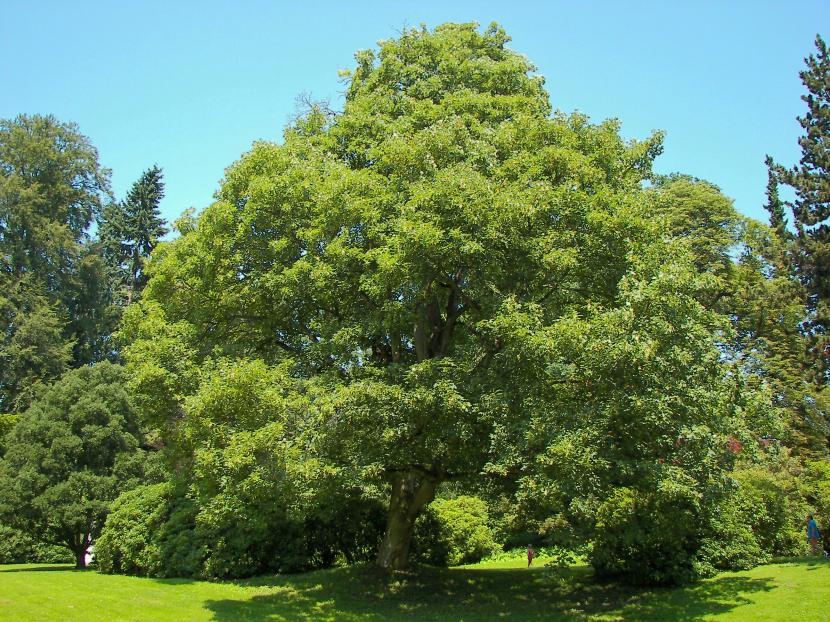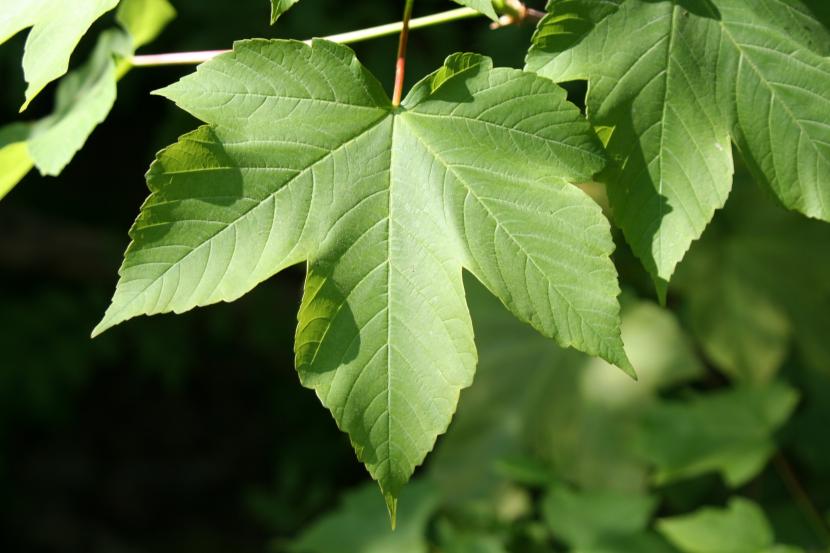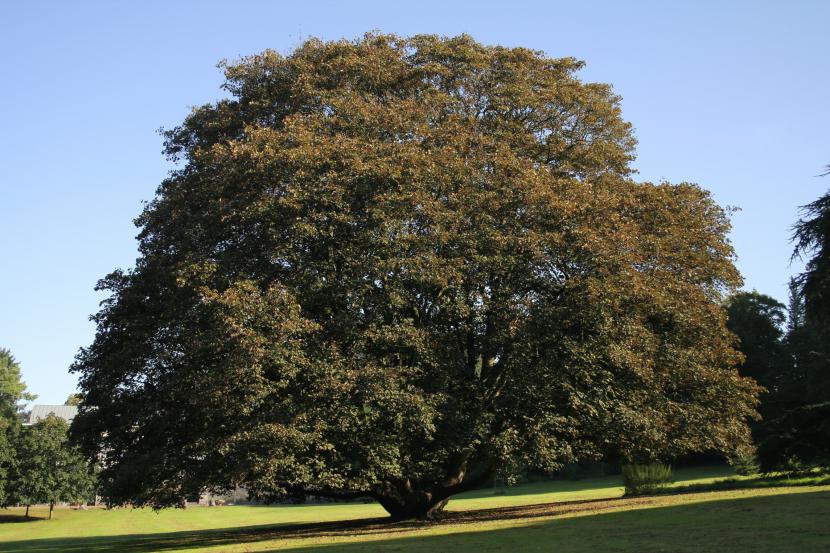
In the temperate forests of central and southern Europe, where winters are cold with freezing temperatures, we can find a great variety of deciduous trees. Among them, one of the most spectacular is the Fake banana, whose scientific name is Acer pseudoplatanus. This deciduous tree can reach 30 meters in height, with a very wide crown 10m in diameter. It certainly gives the perfect shadow to protect yourself from the sun in summer, to have picnics under your coat, or simply to sit and read or enjoy the scenery.
This species is widely cultivated in all those areas where the climate is appropriate for it, that is, where the summers are mild and humid with temperatures that rarely exceed 30 degrees, and with cold winters whose temperatures can reach -18ºC.

The False Plantain is a fast growing tree during the first few years. As it gains height and strength, it slows down. It is ideal as an isolated specimen, to plant in parks or large gardens, as this is a tree to admire season after season. Speaking of seasons, in autumn its leaves turn red at first, and then they turn more and more yellow until they fall.
Although it can withstand warm temperatures somewhat, it is not a tree suitable for hot climates as it needs to feel the passing of the seasons. It could perhaps be adapted to the Mediterranean, but unfortunately it is difficult to get it to fall well. The most normal thing would be for the leaves to turn brown and fall directly.

This False banana in the photo above, is of the variety of purple leaf. Its scientific name is Acer pseudoplatanus »Atropurpureum». It needs the same growing conditions as the green leaf, which means that:
- You need to have a wide ground, so that it can grow well.
- Tolerates many types of soils, but it prefers them fresh, since it lives in mountain valleys and slopes.
- Does not tolerate drought, neither on land nor in the environment.
- Advisable fertilize during the growing season (spring and summer), preferably with organic slow-release compost.
These trees reproduce by seeds, which are collected towards the end of summer / beginning of autumn. To germinate they need to be cold, therefore they can be stratified in the fridge for three months, or if it is cold in winter they can be sown directly in seedbeds and in spring they will germinate.
If you like large deciduous trees, and you have enough space to have it, plus a suitable climate, the fake banana won't let you down.
Good Morning. I love the trunk of the false banana tree. I am fond of bonsai and have been trying to get one for years. This year I have decided to plant seeds. I have them in the fridge for a month, I have thought about leaving them 3 months for layering. Then do you have to take any more steps? Directly to the ground? Any small cut in the seed?
Thanks and best regards
Alex
Hi Alex.
No, after stratification, sow to pot 🙂
Anyway, if you're in a hurry or whatever, you can find seedlings for sale on ebay, like here for example (I do not take commission, for the record).
A greeting.